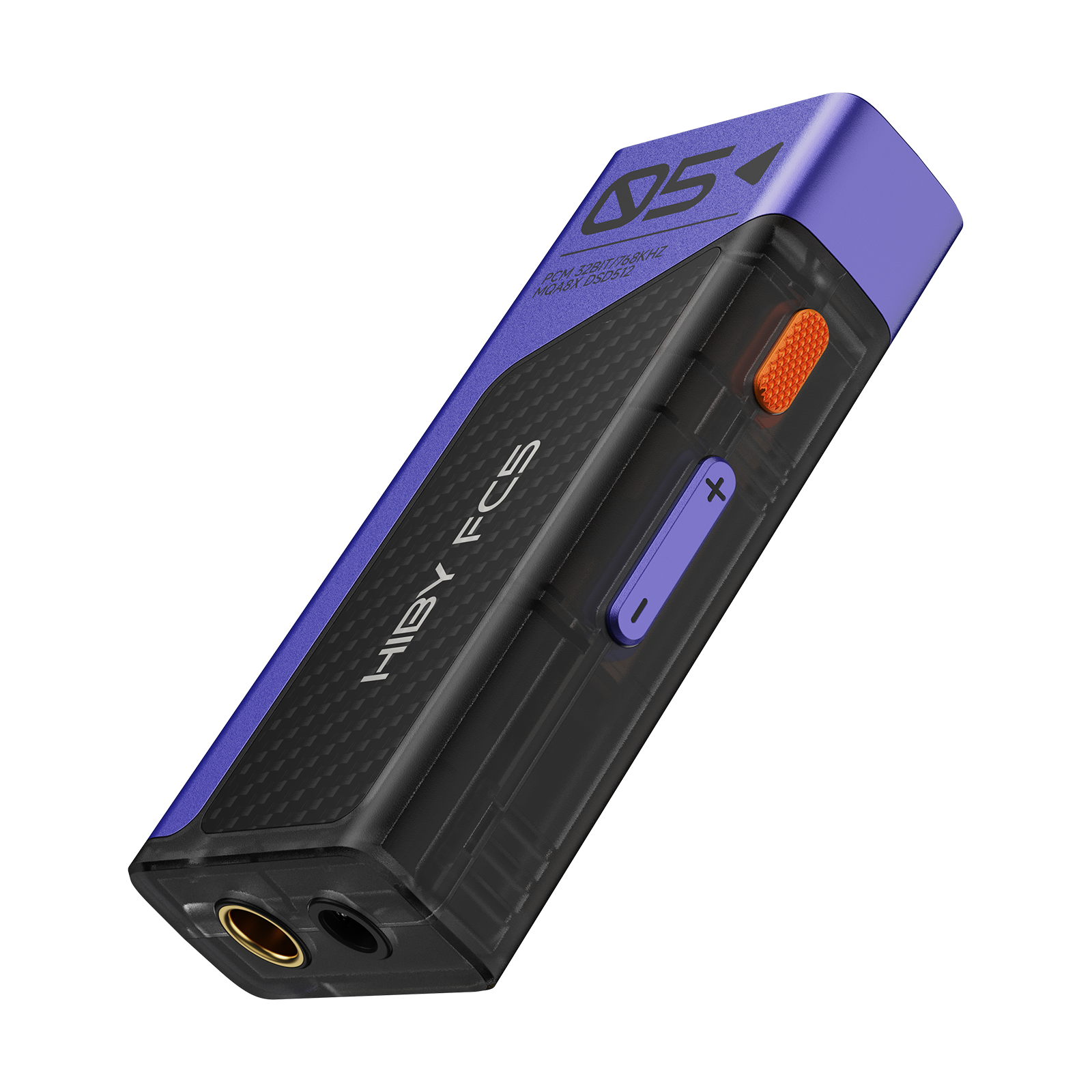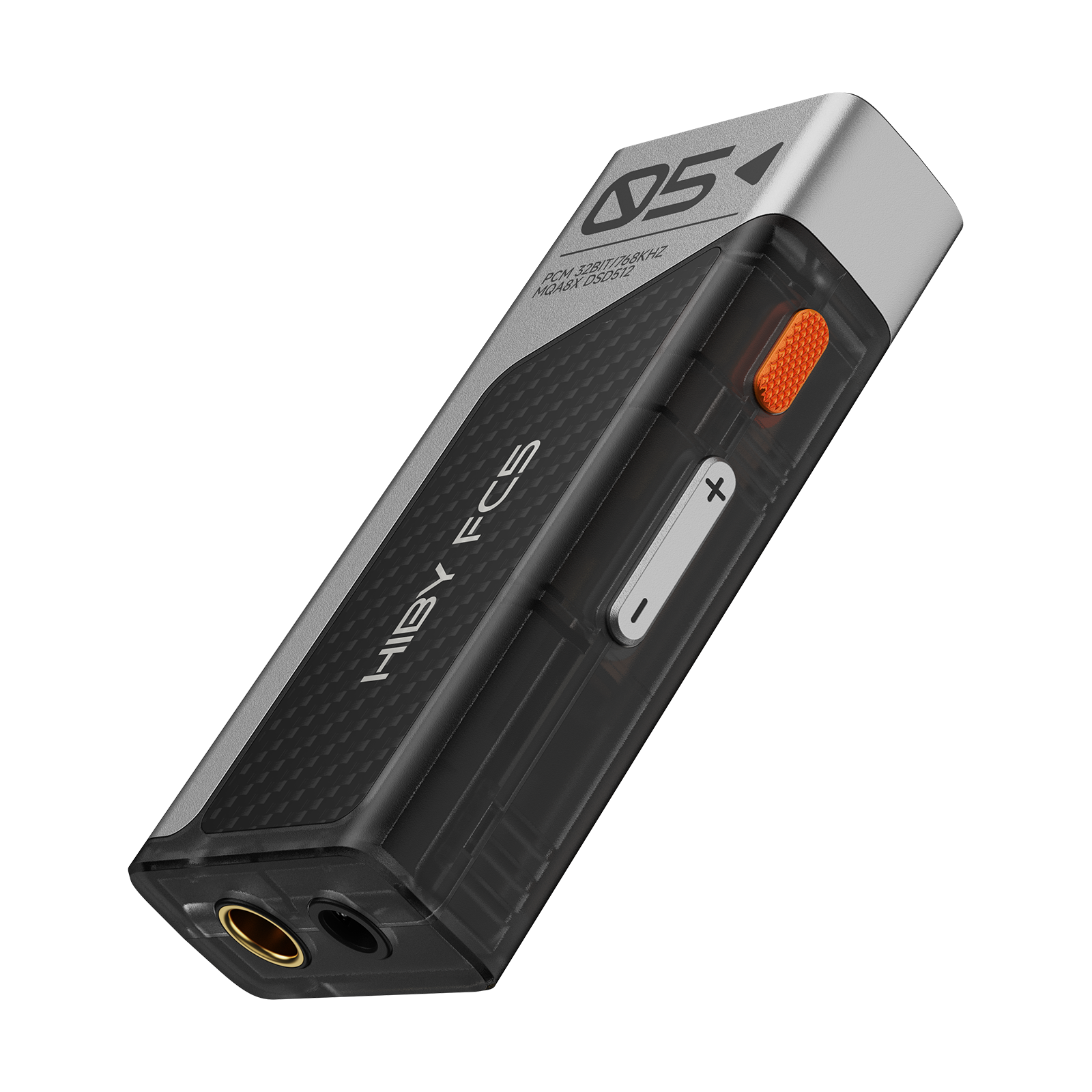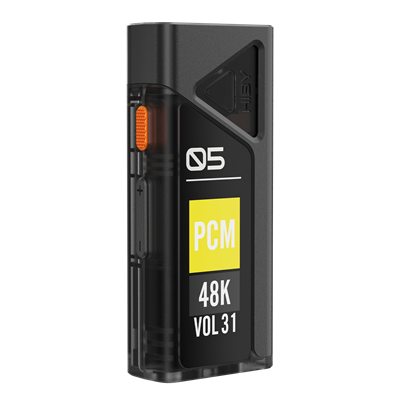HiBy FC5 Screen Edition Manual
Welcome to use HiBy's products
Thank you for purchasing the USB HD lossless audio decoder launched by HiBy. In order to give you a better experience with the FC5 screen version, this article introduces the common functions and operating methods of the FC5 screen version, hoping to help you understand and use the FC5 screen version more comprehensively.
At the same time, you are also welcome to log in to the official website of HiBy at https://store.hiby.com/ to learn more about HiBy product information and purchase related products.
FC5 screen version product picture




1. Product introduction
- Based on HiBy's self-developed USB audio system
- Adopt dual CS43198 decoding architecture, with up to support DSD512 and PCM 768kHz decoding
- Supports PhoneOut(PO) and Balance analog audio output
- Supports nine presets: Pop, Classical, Dynamic, Jazz, Rock and Blues (R&B), Metal, Vocal, Bass, Treble
- Supports custom PEQ: USRE (via HiByUSBMaster OR HiByMusic)
Take the front view of the decoder as a reference:
- From top to bottom on the left are: function keys, volume up, volume down
- Top is: Type-C
- The bottom is from left to right: PO, BAL
- The front is from top to bottom: HIBY Logo, 05 logo, display screen
Unboxing video
2. Key usage instructions
Take the front view of the decoder as a reference:
- From top to bottom on the left are: function keys, volume up, volume down
| Key | Function |
|---|---|
| Function keys | When the screen is turned off, short press: open the screen; when the screen is opened, short press: switch function |
| Volume Up | Short press on the volume interface: Increase the volume; Other interfaces: Up and down switch options |
| Volume down | Volume interface short press: reduce volume; other interfaces: up and down switch options; press and hold if not inserted: enter UAC1 mode |
3. Interface usage instructions
The following introduction is the front view of the player screen as reference:
- Top is: Type-C
- The bottom is from left to right: PO, BAL
Audio output interface
The audio output interface can be provided to different audio devices for use, such as headphones with 3.5mm interface, headphones with 4.4mm balanced interface, and other devices.
- PO: 3.5mm single-ended interface headphone output
- BAL: 4.4mm balanced interface headphone output
USB port
The physical interface used by the USB interface is the Type-C interface.
4. UI introduction
Main interface (volume control interface)
Insert FC5, after FC5 is turned on, the main interface is shown in the figure:
- The top is the playback format: HIBY Logo, PCM, DSD, MQA
- The middle is the sampling rate
- The bottom is the current volume. In the current interface, you can adjust the volume by increasing or decreasing the volume.
- The bottom right corner at the bottom will indicate that the current output port is PO or BAL
When playing songs, the main interface is shown in the picture (the picture below is playing MQA):
- The top is the playback format: HIBY Logo, PCM, DSD, MQA
- The middle is the sampling rate
- The bottom is the current volume. In the current interface, you can adjust the volume by increasing or decreasing the volume.
- The bottom right corner at the bottom will indicate that the current output port is PO or BAL
GAIN
The GAIN interface is shown in the figure:
- The top is GAIN
- The bottom is the current GAIN level
Filter
The Filter interface is shown in the figure:
- Filter words at the top
- The bottom is the current Filter level
EQ
The EQ interface is shown in the figure:
- The top is EQ
- The bottom is the current EQ
How to customize EQ?
Windows / MacOS
Please download the HiByUSBMaster tool. After installation, you can use the tool to set up PEQ 下载地址
Android
Please download the latest version of HiByMusic. After installation, you can set up PEQ through the tool. 下载地址
5. Instructions for use
Connecting the device
Please connect the decoder and host device using a wire with at least one end of Type-C. The host device can be a player, a mobile phone, a computer, a tablet, or a dedicated digital broadcast device.
Some devices may have compatibility issues due to differences in players, phones, tablet systems and hardware. In addition, some phones may need to manually turn on the OTG function to be used normally.
Windows Computer
For detailed instructions, please refer to USB DAC User Manual.
Windows computer, Windows systemWin7/Win8/Win10 versions earlier than 1703The UAC2.0 protocol does not support it, so the driver needs to be installed.
becauseWin7/Win8/Win10 versions earlier than 1703The UAC2.0 protocol does not support, so please refer to this to install the driver [TBD] for a better experience.
The later version of Win10 1703 already has a driver, so you can use it by directly connecting to USB. You can use it with the problem of using it.HereCheck. Drivers can also be installed in later versions of Win10 1703, so that ASIO drivers can be used to achieve a better experience. For the installation of the driver, please refer to [TBD].
Android player, mobile phone or tablet
Android players, mobile phones or tablets can be divided into exclusive and non-exclusive methods. You can also use them.HereCheck.
Just plug the USB decoder into the USB port of your phone to use. If you plug in, you can go to the system settings to see if there is an OTG option and turn on the OTG support of the phone. In addition, you can also download HiBy Music and try the exclusive mode of HiBy Music. Otherwise, the phone will not support it. Please contact the mobile phone manufacturer to confirm.
Download and install HiBy Music (HiByMusic)
Enter HiBy Music -> Swipe right to open the settings options -> Settings -> Click HiBy Music exclusive USB output, open the exclusive output
Plug the USB decoder directly into the phone
"Allow HiBy Music Use HiBy FC5" to pop up on your phone, click Allow
iPhone or iPad tablet
Both iPhone or iPad tablets are iOS.
iOS itself already has a driver, and you can use it by directly connecting to USB. You can use it by using it.HereCheck.
Apple Computer
The operating system of Apple computer is MacOS.
MacOS itself already has a driver, and you can use it by directly connecting to USB. You can use it with the problem of using it.HereCheck.
Linux distribution
Linux's USB DAC support is determined by the kernel. Whether the kernel of different distributions is turned on USB sound card functions is uncertain. For Linux distributions of unsupported USB DACs, you can compile the kernel to implement USB sound card functions by yourself. Or find a third-party app to support USB DAC functionality.
Detailed description
For detailed instructions, please refer to USB DAC User Manual.
6. Frequently Asked Questions
- FAQs can be foundHere
7. Things to note
- This product is powered by USB, so it consumes power from the host device (mobile phone, tablet or computer);
- Since the equipment uses a high-performance decoding chip, it will cause a certain amount of heat during use, which is a normal phenomenon;
- Before plugging and unplugging the headphones, it is recommended not to wear them to avoid possible instantaneous impact sounds;
- Before listening to music, it is recommended to adjust the volume of the device to the appropriate position to avoid excessive volume damaging hearing;